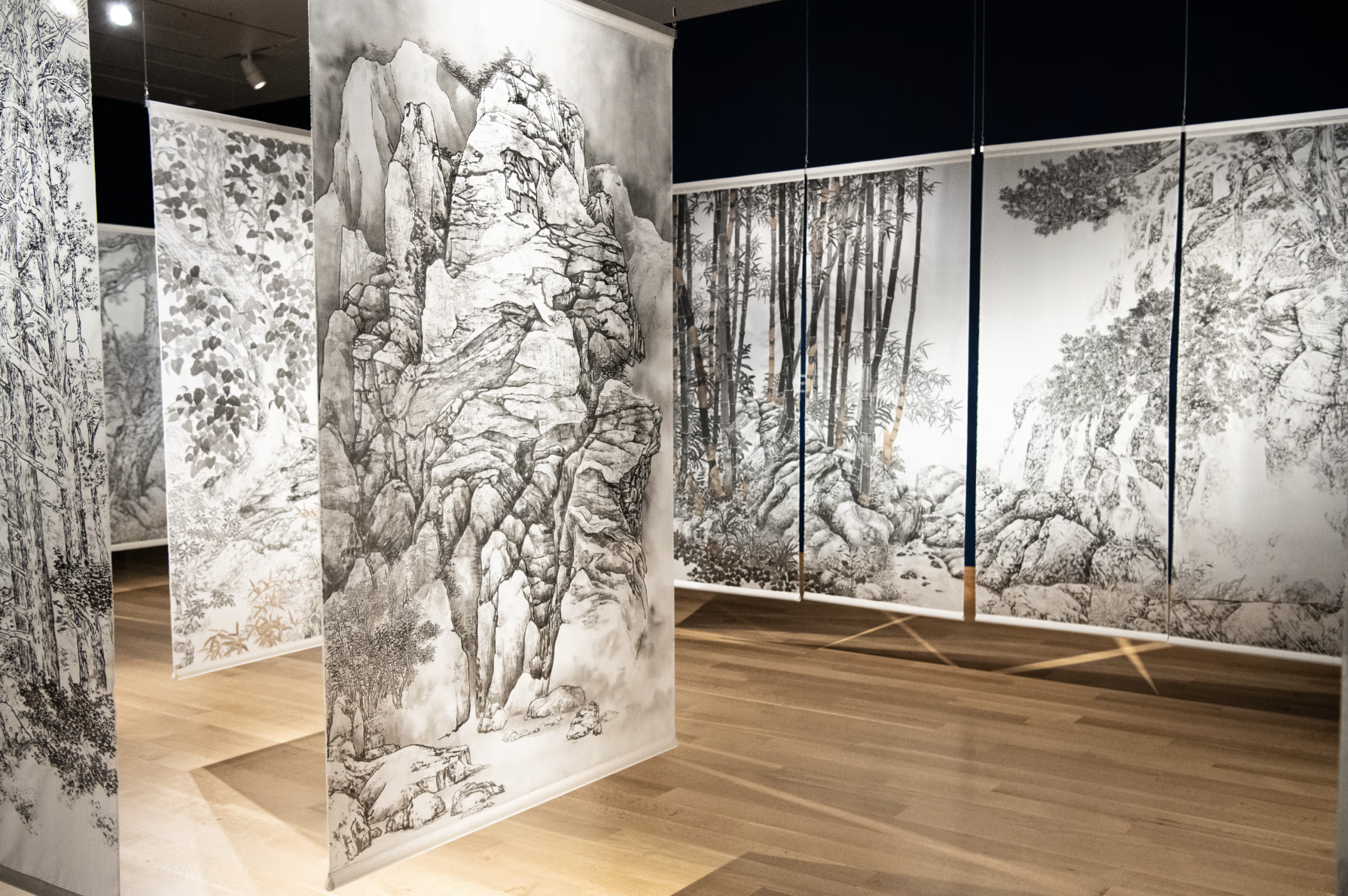Silk Installation at the Huntington Reflects on a World ‘Without Us’

Wang Mansheng, Without Us, 2024-25. (Photo: The Huntington Library, Art Museum, and Botanical Gardens)
Looking down from a plane, Wang Mansheng felt uneasy about how much of the Earth is now covered by roads and buildings. Reflecting on this environmental change, he stated, “Pure nature is now unattainable except through my imagination or brush.” His new works at the Huntington put that imagined nature on display.
Earlier this month, Without Us, an installation by Wang Mansheng, opened at the Huntington’s Chinese Garden art gallery, the Studio for Lodging the Mind. Composed of 22 immense hand-painted silk panels, the installation blends contemporary art with classical Chinese perspectives on nature, inviting viewers to consider the harmony of the natural world.
Wang Mansheng was born in Taiyuan, Shanxi Province, China in 1962, and is based in New York. His work combines modern artistic approaches with traditional Chinese painting. At the Huntington, visitors can find his designs throughout the Chinese Garden, including two carved pictorial tiles that flank the entrance to the Studio for Lodging the Mind.
In Without Us, Wang portrays detailed landscapes of plants, rocks, and water–a vital resource for all life that is increasingly endangered by human activity. He also paints three types of animals: silkworms to represent insects, ducks to represent bird life, and rabbits to represent mammals. Wang stated, “These and many other species inhabit the Earth along with us humans. They have the right to share the water with us. But our waste and pollution threaten life on Earth, including ours.”
During the year he spent working on the project, Wang used approximately 30 different brushes, including some he made himself. Using reeds that grow in the Hudson River near his home, Wang combs out the seeds and then trims the reed flowers when they bloom in autumn. He selects individual reeds or ties several together to create brushes of different sizes. Some are used for fine details, while others are used for painting broader areas, such as the surface of a rock.
A close look at the pine tree in the exhibition reveals visible brush marks. To emphasize the tree’s age and texture, Wang painted the bark using a medium-sized reed brush. He applied additional layers with a larger reed brush to enhance the detail. “I love using these handmade brushes because they create natural, sometimes rough, but powerful and expressive marks,” stated Wang. “Manufactured brushes often produce lines that are too smooth, almost too perfect. The reed brush has more character.”
In addition to using bottled ink and Chinese and Japanese ink sticks, Wang also creates his own ink using black walnuts, which are commonly found in the Hudson Valley. He gathers them in the fall once they have matured and changed color. The ink is stored in jars, where it darkens over time. By mixing older and newer inks, he can obtain various shades of brown.
Suspended from the gallery ceiling, the silk panels of Without Us invite viewers not only to view but move immersively through the landscapes. As they wander among the painted mountains and streams, the translucent silk allows silhouettes of other viewers to become momentarily part of the scene, blurring the boundary between human presence and the natural world.
Alongside the paintings, the exhibition features excerpts about the relationship between humans and nature from eight ancient poets and philosophers, including Laozi, who wrote, “In governing people and serving Nature, nothing is better than frugality.” By placing these words among the artwork, the installation encourages visitors to reflect on their relationship with nature and perhaps find echoes of their own thoughts in writings from centuries past.